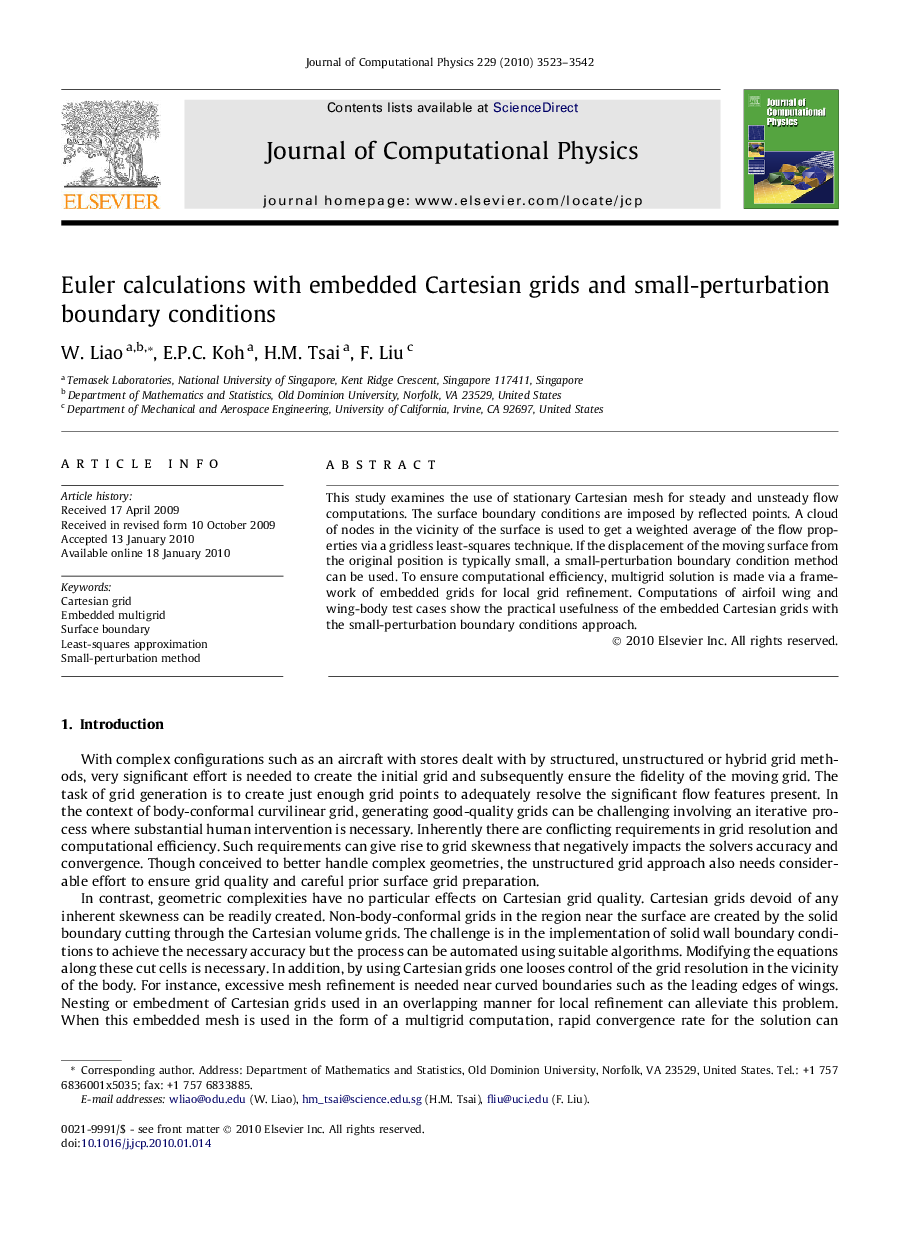| Article ID | Journal | Published Year | Pages | File Type |
|---|---|---|---|---|
| 519502 | Journal of Computational Physics | 2010 | 20 Pages |
This study examines the use of stationary Cartesian mesh for steady and unsteady flow computations. The surface boundary conditions are imposed by reflected points. A cloud of nodes in the vicinity of the surface is used to get a weighted average of the flow properties via a gridless least-squares technique. If the displacement of the moving surface from the original position is typically small, a small-perturbation boundary condition method can be used. To ensure computational efficiency, multigrid solution is made via a framework of embedded grids for local grid refinement. Computations of airfoil wing and wing-body test cases show the practical usefulness of the embedded Cartesian grids with the small-perturbation boundary conditions approach.
